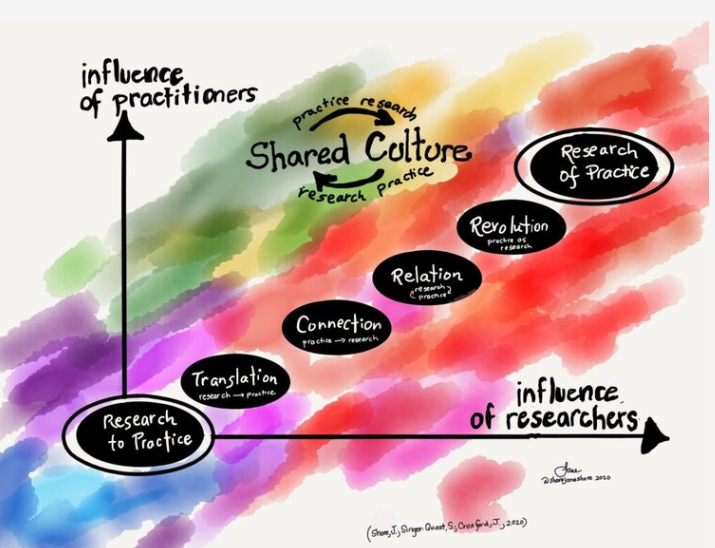Interdisciplinary thinking is needed in a time of crisis: Q & A with Dr. Rick Szostak
Dr. Rick Szostak
This post from the Methodspace archives is relevant now, because we are looking at why and how to cross disciplinary boundaries to conduct more relevant research. In April 2020 our Mentor-in-Residence was Dr. Rick Szostak, and needless to say, it was a month of turmoil as the Covid pandemic became a reality. Szostak is an expert on interdisciplinary research, the co-author of two recent book editions, Introduction to Interdisciplinary Studies (2019) and Interdisciplinary Research: Process and Theory (2020). He also co-authored the 2011 Case Studies in Interdisciplinary Research.
The term interdisciplinary is one that is over- and inaccurately-used. I asked Dr. Szostak to comment on the current situation.
JS: What does interdisciplinary research offer in this time when a large-scale health crisis has caused wide-spread disruption?
RS: One of the difficulties that governments face in addressing the COVID-19 pandemic is that it is a complex challenge that requires advice from experts from many disciplines. In this, it is like most other contemporary policy challenges: climate change and inner city poverty also cry out for multiple kinds of expertise. But the need for cross-disciplinary insight may be more obvious for the pandemic, if only because we all have more time to watch the news.
Most obviously, there is need for advice from different types of health professionals: among them epidemiologists to predict likely trajectories of infection and mortality; emergency room doctors to outline challenges and best practices; and the ever-present public health experts to guide policies around social isolation.
Then there is a need for economic advice on how to maintain economic activity when millions lose their jobs overnight. Sociologists and psychologists have different insights about how both social isolation and fear of contagion may affect people.
The problem would be less severe if governments could just consult different expertise in turn. But an economist predicting the course of unemployment can obviously benefit from understanding epidemiological predictions, but also insights from psychologists and sociologists about the impacts of social isolation on individual motivation, and from political scientists on the likely course of public policy. Governments need coherent advice that integrates disciplinary insights.
We constantly face issues that call for an interdisciplinary response. Interdisciplinary analysis is challenging but quite feasible. Fortunately, there are strategies that have been found useful for both interdisciplinary research and teaching.
JS. There are still many unknowns in the current situation, and in planning for the future. What insights can we gain from interdisciplinary thinking?
RS. Examining cross-disciplinary connections illuminates unknown unknowns. I find it easiest to think of unknown unknowns as challenges that we will face in future that we do not foresee today. Naturally, planners in various fields would like to be able to foresee exactly this sort of "surprise." But how can we possibly identify unknown unknowns?
One important subgroup of unknown unknowns occurs when some phenomenon that we know a lot about has an unexpected effect on another phenomenon that we know a lot about. Most of the time we may have a vague appreciation that most phenomena influence most other phenomena, but have little reason to reflect about most possible interactions, until a surprise occurs. An example is unanticipated “interactions” between medications. How might we better identify such unexpected interactions? Which type of interaction are researchers least likely to reflect upon? Disciplinary scholars focus on interactions among the phenomena that their discipline studies, but usually ignore interactions with phenomena studied in other disciplines. The academy as a whole thus devotes far less attention to interactions among phenomena studied in different disciplines.
My research in Szostak (forthcoming) has convinced me that such interactions are important. Major historical transformations, which were generally surprises at the time, almost always involve interactions among the phenomena studied by multiple disciplines. The development of agriculture arguably reflected interactions among changes in population, environment, and technology. The expansion in the size of state bureaucracies over the last century reflects interactions among political, economic, and technological developments. My research has found a general historical rule that major transformations involve cross-disciplinary interactions (https://sites.google.com/a/ualberta.ca/rick-szostak/research/making-sense-of-wh]), and this insight provides a powerful guide to understanding the future. I was, I confess, looking for cross-disciplary connections, but I was very pleased at how ubiquitous these turned out to be.
It is useful, then, to explore why the disciplinary organization of the academy might encourage the existence of unknown unknowns. In a 2017 article, "Stability, Instability, and Interdisciplinarity," I noted that most disciplines posit some system of stability among the phenomena they study. Yet, these systems of stability are often disrupted by interactions with phenomena studied in other disciplines.
For example, the market equilibria studied by economists can be disrupted by changes in weather or public tastes or political institutions. Here we have a very important sort of unknown unknown: A system that generally exhibits stability -- and thus we may not worry about it too much -- is suddenly shocked into dramatic change by changes considered exogenous by disciplinary experts.
Disciplinary scholars may well be aware that their systems can be shocked from outside. They may in some cases recognize the existence of possible exogenous shocks, but devote far less attention to these than to theorizing systems of stability. At other times, they may purposely ignore or downplay the possibility of cross-disciplinary interactions. Economists know that there was a Great Depression, but continue to develop macroeconomic theories that cannot explain it, and reject explanations of the Great Depression that involve phenomena studied in other disciplines (Szostak 2005).
How can we shift unknown unknowns to known unknowns? Interdisciplinary scholars routinely investigate interactions among phenomena studied by different disciplines. However, interdisciplinary scholars have not generally recognized a goal of identifying unknown unknowns. If this goal was more widely appreciated within the community of interdisciplinary scholars it might prove possible to come to know about many of these.
Questions for reflection:
Have you seen examples in your own discipline of a reluctance to embrace useful ideas from outside?
Do you have instances where cross-disciplinary research uncovered unknown unknowns?
As interdisciplinary scholars study cross-disciplinary relationships, how might they identify plausible future surprises?
Learn more:
Szostak, Rick. “Stability, Instability, and Interdisciplinarity” Issues in Interdisciplinary Studies.35, 65-87, 2017. Available at: http://interdisciplinarystudies.org/docs/Vol35_2017/05_65-87.pdf
Szostak, Rick. Making Sense of World History. Forthcoming, Routledge. [See https://sites.google.com/a/ualberta.ca/rick-szostak/research/making-sense-of-wh]













The Director and Assistant Director of the Bass Connections program at Duke University share lessons learned and open access resources for team success in interdisciplinary collaborative research.